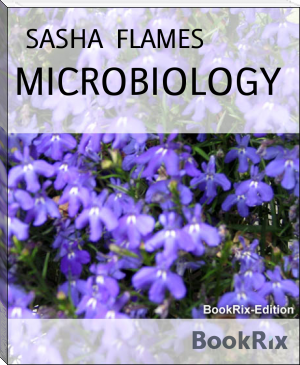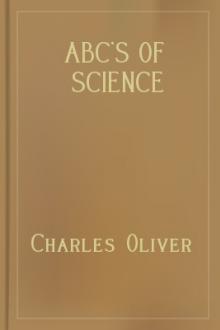mechanical stage chips. A mechanical stage allows the operator to move a slides around smothly during viewing by the use of stage control knobs. The upper arm holds the body assembly to which a nose-piece and one or two eye-piece or oculars are attached. The nose-piece holds the three-five objectives with lenses of different magnifying power which can be rotated to position any object or specimen beneath the body assembly.
DARK-FIELD MICROSCOPE--This is another type of light compound microscope equipped with special condenser which directs the light path away from the source of illumination. This effect produced by dark -field techniques is a black background aganist which objects are brighly illuminated. The light directed through the condenser does not enter the objective and the entire field of view is dark. Since the medium contains objects that differ from the its refractive index, there is a scattering of light by reflection and refraction. The scattered light will enter the objects and it will appear bright in the dark microscopic field. Dark-field micrscope is valuable for examination of unstained micro-organisms suspended in field that is wet and hanging drop preparations. An example of the observation of the SPIROCHETES OF SYPHILIS called TREPONEMA PALLADIUM.
ULTRA-VIOLET [UV] MICROSCOPE-- A slight increase in the resolving power of the light microscope can be achieved by giving light of a wavelength shorter than the visible light namely ultra-violet radiation, since the human eye cannot see ultra-violet rays, a photographic plate must be used to record the image and the plate is developed later. Furthermore the entire lens system must be constructed of the quart, since glass is opaque to the shorter wavelength in the ultra-violent radition magnification two or three times that of the bright field microscope can be obtained.
THE FLUORESCENCE MICROSCOPE---- One of the modification of the ultra-violent microscope which is considerable use in biology and microbiology. Many chemicals substances which absorbs ultra-violent rays are able to re-emit part of the absorbed energy as light of longer [visible] wavelength. The phenomenon is known as fluorscence. It follows that if a fluorscence object is illuminated with ultra-violent ray, it can be preceived by the human eye as a result of its fluorscence. This is the principle which underlies fluorscence microscopy. In practice, the object is illuminated by an ultra-violent beam that passed through a quartz condenser and the fluorescence light is then picked up and transmitted to the human eye throug a filter whivh screens out other wavelength.
INTERFERENCE MICROSCOPE----It is used for quantitative studies of marcromolecules of the cell components for example: it is used for determination of the lipids, nucleic acids and protein content in cells. Interferometry is a traditional technique in which a pattern of bright and dark lines fringes result from a optical path difference a reference and a simple beam. The incoming light is split inside an interferometer, one beam goes to an inter reference and the other to the sample. After reflection, the beam recombines inside the interferometer undergoing constructive and destructive interference and producing the light and dark fringes pattern. A precision translation stay and CCD camera together genera a 3D interferogram of the object that is stored in the computer memory. This 3D interferogram of the object is then transformed by the frequency. Analysis into quantitative 3D image providing surface structure analysis.
PHASE-CONTRAST MICRSCOPE----This is used to study the behaviour of living cells, observe the nuclear and cytoplasmic changes taking place during the mitosis and the effects of the different chemical inside the living cell. By using the phase-contrast microscope, an image of strong constrast of the object is obtained. It is a contrast-enhancing optical technigue that can be utilized to produce high contrast images of transparent specimens such as the living cell [ in culture] microorganisms,thin tissues, silicied, fibre glass fragments and sub-celluar particles including nuclei and other organelles. In effect, phase-contrast techniques employs an optical mechanism to translate minute variations in phase into corresponding change in amplitude which can be visualized as difference in many contrast. One of the advantages of phase-contrast is that living cells can be examined in their natural state without previously being killed, fixed and steamed. As a result, the dynamic of ongoing biological process can be observed and recorded in high contrast with sharp clarity of minute specimen detail.
COMPOUND MICRSCOPE----It consist of two set of convex lenses. A len of short aperture and short focal length facing the object called objective. Another set of lens of relatively moderate focal length and lens aperture facing the eye called the eye piece. The objective and the eye piece are placed coaxially at the two and of a tube. The object is placed between centre of curvature and focus of the objective. It forms real, inverted and magnified image on the other side of the objective. The image acts as a simple eye piece microscope to produce virtual, erect and magnified image. Magnifying power [m] of a compound microscope will be : m=L/fo(l+D/fe). fo and fe =focal length of the objective and eye, L =length of the micrscope tube, D = least distance of the distnict vision
ELECTRON MICRSCOPE----The organelles of the cell became known after the electron microscope was invented. The electron microscope developed in 1932 by H.Knoll and Ruska in Germany. it consist of a source of supply, a beam of electron and uniform velocity, a condenser lens for concentrating the electron on the specimen, a specimen stage for displacing a specimen which transmits the electron beam, an objective lens, a projector lens and a fluoresent screen on which final image is observed. The fluoresent screen is replaced by photographic film. This microscope utilizes a stream of high speed electron which are deflected by a electromagnetic field the same way as a beam of light is reflected when it crosses a glass lens. There are two types of electron microscope. Namely:
TRANSMISSUION ELECTRON MICROSCOPE (TEM)-----It is used to observe the fine structure of cells. Ultra thin section of the object are prepared and they are heavy metals (gold or palladum) to make contain part dense and insert in the vaccum chamber of the microscope. A 100,000 volts electron beam is focused on the section and manipulation prepared from the image maybe enlarged with enough resolution to achieve total magnification of over 2 million times.
SCANNING ELECTRON MICROSCOPE-----It is used to study the surfaces of the cell and organisms. its image is formed by electron reflected back from the object. the image formed by this microscope has a remarkable three dimensional apperance typically magnification of scanning is around 20,000 times.
CHAPTER FIVE-THE VARIOUS MICROBIAL STAINING TECHINQUE.
THE VARIOUS MICROBIAL STANING TECHNIGUE
STANING: It means coloring of micro-organisms with the dye that emphasizes and elucidate different important structures of micro-organisms including bacteria, virus,protozoa and etc.
IMPORTANCES OF STAINING
In Microbiology, the concept of staning is very important because it highlights the structure of micro-organisms allowing them to be seen under the microscope ( simple and electron microscope).
It is used to differentiate different micro-organisms
used fot the identification of micro-organisms like bacteria which may either be gram postive or gram negative.
THE VARIOUS TYPES OF STAINING
ACID FAST STAIN (Zichl-Neelsen technique)-----I t distinguish acid fast bacteria such as mycotbacterium spp from non-acid fast bacteria; wich do not stain well by gram staning. it is used to stain mycobacterium species (mycobacterium, m.tuberculosis, m.ulcerer, m.leprae).
ACRIDINE ORANGE STAIN----- this staining method is used to confirm the presence of bacteria in blood culture when gram stain result are different to interpret or when presence of bacteria is highly suspected but none are detcted using light microscopy. Acridine orange binds to nuclric acid and stains them. It is also used for the detection of mycoplasms [ cell wall deficient bacteria]
AURAMINE-RHODAMINE TECHNIQUE-------This fluorochrome staining method is used to enhance the detection of mycobacteria directly in patient specimens and initial characterization of cell grown in culture.
GRAM STANING---------Gram staining is very important differential staining techiques used in the initial characterization and classification of bacteria in microbiology. it helps to identify bacterial pathogens in specimens and culture by their gram reaction. [[ Gram postive and Gram negative] and morphology [ cocci/ Rod]
NEGATIVE STAINING........ Negative stains are used when a specimen or a part of it, such as the capsule resists taking up the stain. India ink preparation is recommended for use in the identification of cryptoccus neoformans.
IRON-HEAMATOXYLIN STAINS.......... It is used to stain tissue components such as myclin, elastic and collageric fibres muscle striations etc
CHAPTER SIX-THE CHARACTERISTICS OF MICRO-ORGANISMS
THE CHARACTERISTICS OF MICRO-ORGANISMS
BACTERIA:
BACTERIOLOGY, the study of bacteria forms a major part of microbiology. The population of bacteria excceds all other organisms. Bacteria are important because
the diseases they cause
domestic uses
industrial applications
agricultural processes
CHARACTERISTICS OF BACTERIA.
Bacteria are prokaryoticunicelluar organisms. they lack organized nucleus but possess a rigid cell wall comparable to that found in plants.the average size of a bacteriaum is around 2um.It maybe spherical, rod-like, spirally coiled or filament like. based on the response to Gram's stain, the bacteria are grouped as Gram +ve or Gram -ve. Bacteria require oxygene [ AEROBIC BACTERIA] examples are PSEUDOMONAS SP and MYCObacterium sp. some bacteria that do not need oxygene because they are toxin to them [ANAEROBIC BACTERIA] examples are PEPTOCOCCUS SP. (1)Some bacteria grow in anaerobic and aerobic conditions, they are called FACULTATIVE BACTERIA example SHIGELLA SP,SALMONELLA sp AUTOTROPHIC BACTERIA. These bacteria are capable of synthesizing their own food from inorganic substances. they utilize different hydrogen compounds include hydrogen ammonia, hydrogen sulfide and methane e.g [hydrogen-nomonas sp, nitrosomona sp methanomonas sp
(2) HETEROTROPHIC BACTERIA : they cannot synthesize their own food and are therefore dependent on the outside source of food. there are two types - sporophytes and parasite. Sporophytes obtains their food from sources of plant or animal origin. these include organic remains like corpses, animal excereta, meat, fruit. sporophytes secrete digestives enzymes that breaks the complex organic molecules into simple and easily absorbable forms.






Comments (0)